Fig trees take little care when it comes to feeding, especially when planted in nutritious soil; their roots are limited, and they get plenty of sunshine. Every Fig tree does not enjoy these conditions, and therefore it will need to promote nutrients to help it flourish. All elements are not always present in the soil. Fertilizer delivers crucial aspects to your Fig trees. Let’s check out the best fertilizer for Fig trees/Anjeer below.
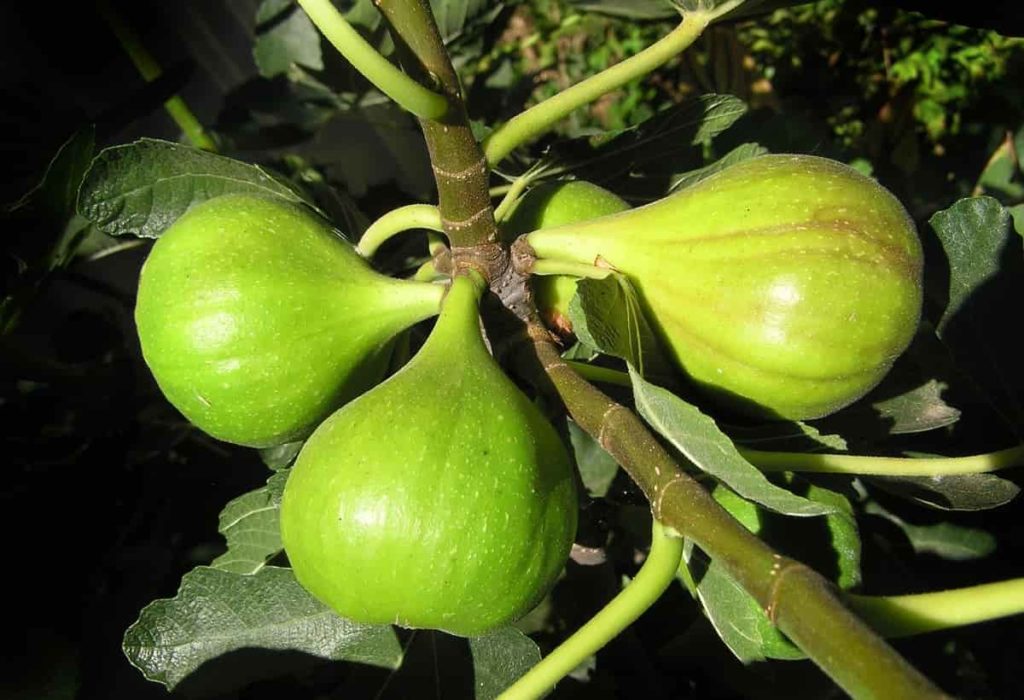
Fig trees need food, water, and protection to survive and produce healthy fruits. Without food, your Fig tree can have little or no fruit. Fertilizers can be found naturally in soil, but plants with phosphorus, potassium, and nitrogen fertilizer can be supplied through supplements. Nitrogen is essential. It gives green color and promotes vigorous plants with thick green leaves. Potassium works closely with nitrogen in strong leaves and root production. It enhances the tree’s ability to resist droughts, cold weather, and diseases. Phosphorus ensures strong root growth.
Best fertilizer for Fig trees/Anjeer
Homemade fertilizers for Fig
Banana peels
To use the peel as fertilizer, cut the banana peel into small pieces and spread the remains on the soil around the Fig tree.
Coffee grounds
Coffee grounds contain nitrogen, phosphorus, and potash, respectively. It could be the best fertilizer for Fig trees. It adds organic material to the earth that improves soil fertility and drainage. To use the coffee ground as fertilizer, sprinkle coffee ground on the soil and scratch the soil above.
In case you miss this:Top Miracle Grow Tips for Your Garden Plants: Vegetables, Fruits, Flowers, and Herbs
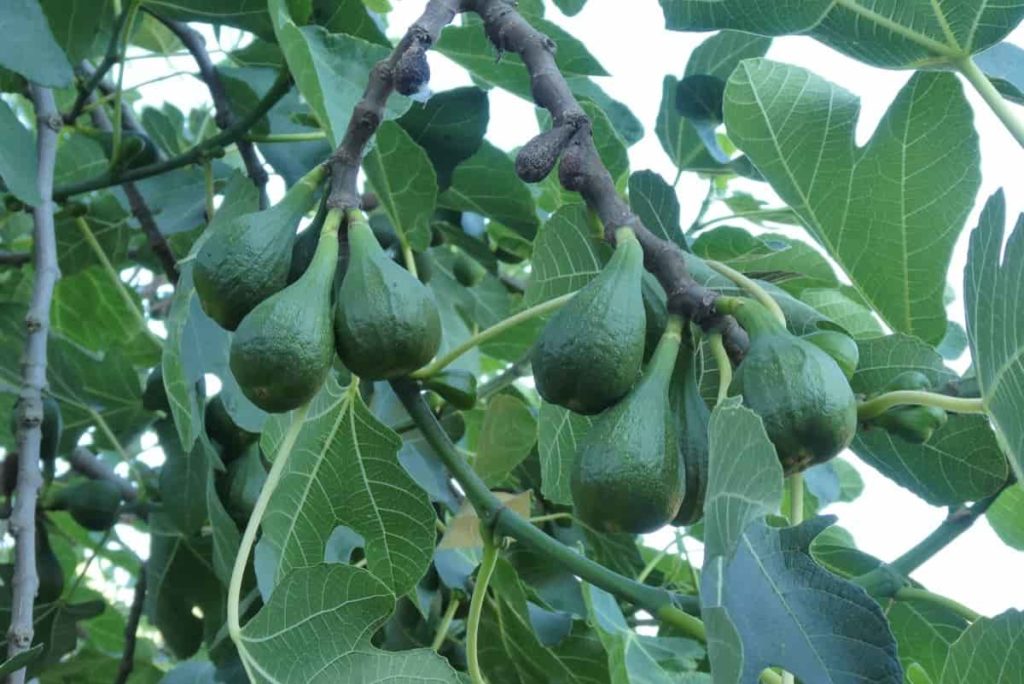
Eggshells
The powdered eggshells will provide calcium to your Fig trees when applied to the soil.
Liquid fertilizers for Fig
Liquid seaweed or manure tea
It can be enough as fertilizer for Fig trees. A Fig tree can grow sufficiently with many organic materials in soil like other plants.
Fish waste
Aquarium water is healthy for Fig trees. This includes beneficial bacteria, NPK, and other micronutrients that accelerate plant growth and root growth. Before watering the fish waste, make sure there is no excessive salt content in the water.
Epsom salt
You can mix one tablespoon of Epsom salt in a gallon of water and feed once per 1 to 2 months to provide magnesium. It is beneficial to Fig trees.
Compost manure for Fig
A single layer of rich, well-rotten manure above the soil will provide the Figs with the essential nutrients. The annual mulch of well-rotten manure or compost stop growing weeds around the Fig tree will keep the soil fertile.
Worm castings
You can apply 1 centimeter of worm castings spreading on top of the potting mix, with the idea that it will slowly release nutrients into the pot. Then, cover it locally with some leaves as source mulch.
In case you miss this: Fig Gardening For Beginners – How To Start, FAQs
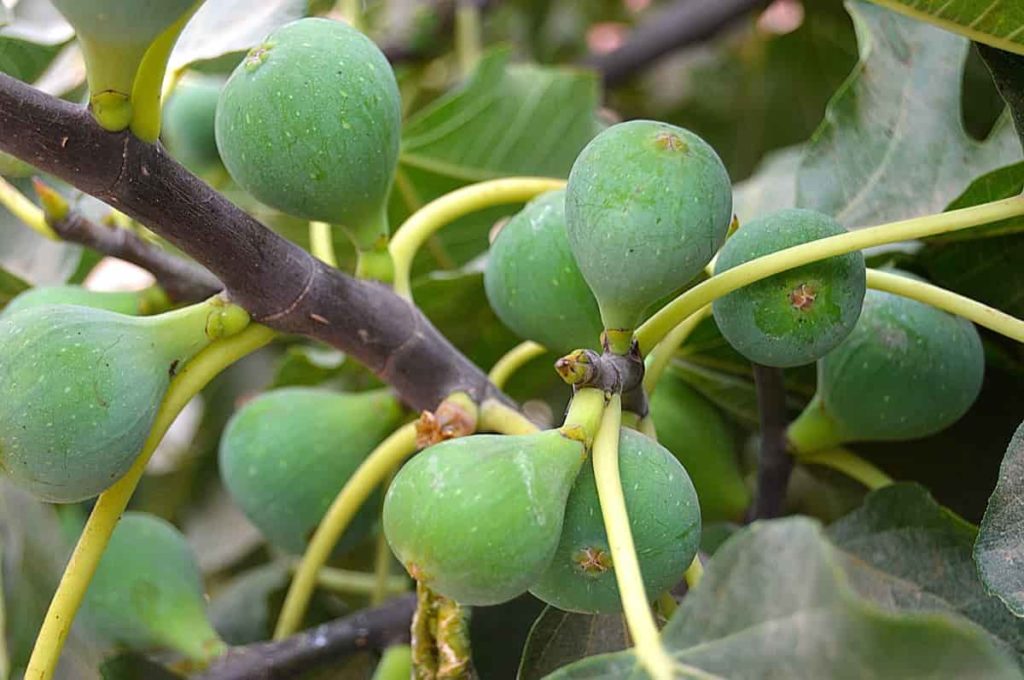
Natural fertilizers for Fig
Organic mulch like grass clippings, grass, or pine needles is crucial in growing healthy Fig trees. Mulch Fig tree 12 inches deep. Mulch will preserve warm soil temperatures in winter and prevent tree crowns from freezing.
Organic fertilizers for Fig
Chicken manure, alfalfa meal, feather meal, corn gluten meal, fish emulsion fertilizers are good nitrogen sources. These options, such as corn gluten and feather food, are slow-release fertilizers. Quick-release fertilizers can instantly boost your tree-like fish emulsion when appropriately applied.
Commercial fertilizers for Fig
Fig trees are low maintenance slow-growing trees. Like other plants, these versatile trees need nutrition from fertilizers at some point. However, excessive fertility can also harm them. So, a closer look is required to know when to feed them and what is the best Fig tree fertilizer. Generally, slow-release, balanced, and organic fertilizer with the same numbers of NPK make for an excellent option for Fig trees.
The balanced fertilizer of NPK, such as 8-8-8 or 10-10-10, provides plenty of nutrition to Fig trees where growth stops, symptoms of deficiencies appear, or are planted at a point surrounded by other plants. As the growing season progresses, fruit starts appearing; you can switch to high potassium fertilizer in granular form. Be sure not to over-fertilize as additional nitrogen will encourage growth at the expense of fruit production.
Fig fertilizer schedule
Fertilizing Fig trees is an essential part of growing healthy trees and should be done at least twice a year or whenever you see your tree needs extra food. Fertilizer for Fig trees is better to provide only when the tree shows signs of slow growth or yellow leaves, but there are exceptions where Fig trees need to be fed regularly. Nutrients quickly get out of the sandy soil, so if the tree grows in a sunny spot, you’ll probably need to give an annual compost. You will also need to fertilize Fig trees surrounded by other plants competing for nutrients.
Regular fertilization is usually only necessary when raising the Fig tree in a pot or sandy soil. Too much nitrogen promotes excessive leaves and poor fruit production or failure to ripen. A good practice for Fig trees other than fertilizer is to spread a 4- to 6-inch-thick layer of organic mulch-like straw on the ground around the Fig tree. Mulch will preserve soil moisture and reapply the mulch as needed to maintain the depth of the surface every year.
Whether you choose liquid fertilizer, grains, or spikes, always read the product’s label you’re using before you start. Avoid getting fertilizer on the stem of a Fig tree like all fertilizers as it can burn and lead to disease. Instead, apply the right fertilizer on the soil near the drip line. The grain will need to be gently dug into the ground. Then soak the area with water so that fertilizer can be activated. Rake up some dirt around where you applied fertilizer to prevent water from flowing from the application zone.
In case you miss this: Growing Kale Hydroponically; Plant Care; Yield Guide
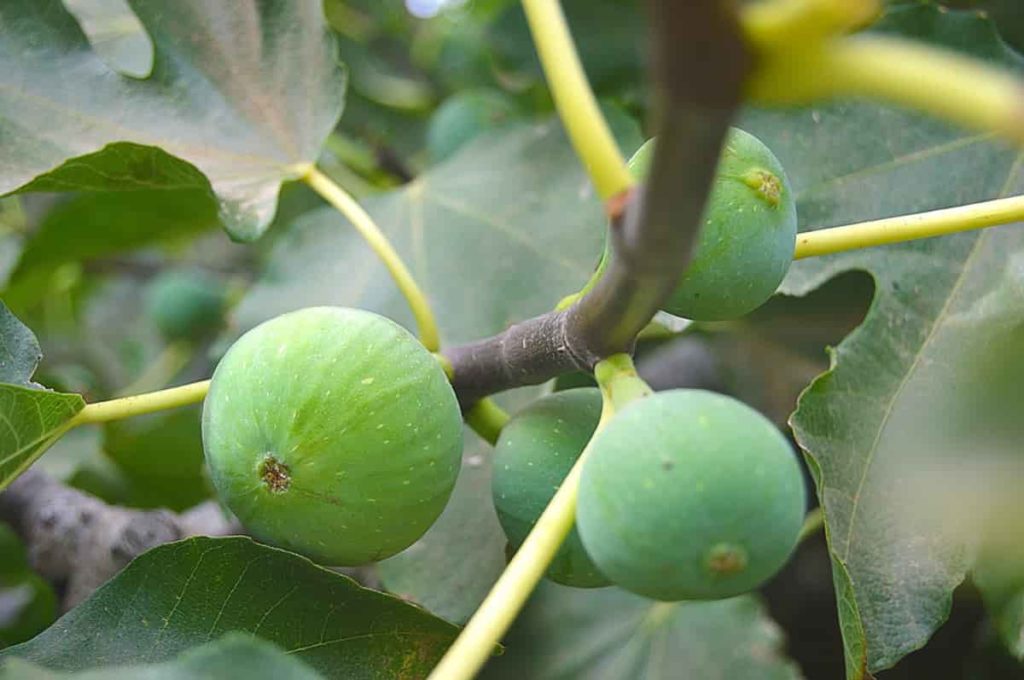
Fertilize your young trees once a month in 30 grams of fertilizer; as soon as it produces leaves stop fertilizing. Established trees need to be underfed, preferably at the end of winter, once 10 grams for each foot of height, once halfway through spring, and then one final fertilizing at the height of summer. Do not apply fertilizer when planting Fig trees during passive weather, when there are no leaves of trees. Fertilizer to be added until new growth emerges.
Fig trees can be fertilizer when planted during spring and summer, but the fertilization process is stopped two months before the first frost date. Late fertilization can trigger new tender growth that an early freeze may damage. Organic plant food can be applied additionally by the end of spring or early summer. Spread the fertilizer evenly under and around the branches cover. Follow the request instructions on the product label.
How to fertilize Fig in pot
When fertilizing your Fig tree in pots, you may want to avoid certain things as it can cause the death of your plant. Adding fertilizers such as liquid seaweed, compost, manure tea is enough as fertilizer. But you can add a seaweed extract once a month from spring to summer season. Fig trees, like other plants, are healthy in soil that contains organic matter. Although organic fertilizers do not provide high levels of nutrients like artificial, they keep the environment safe and clean.
In case you miss this: Best Fertilizer for Citrus Tree: Homemade, Organic, Natural, Liquid, Compost, How and When to Apply
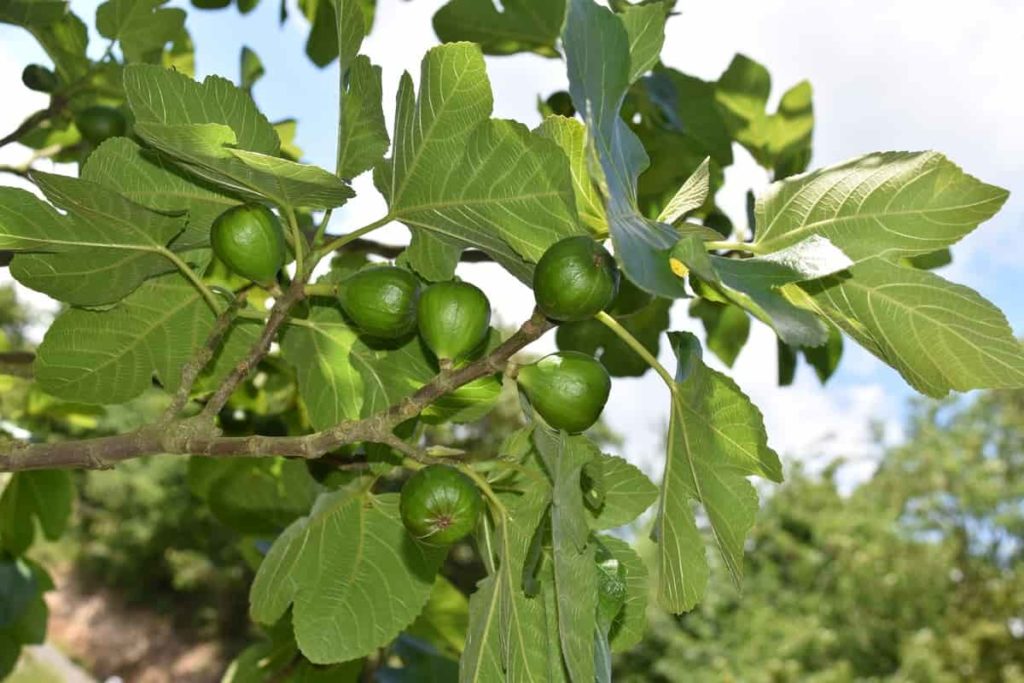
Fig trees planted in pots do not need as much fertilizer as the trees planted on the ground. Overfertilizing your Fig tree can reduce fruit growth, making your plant more prone to diseases and insects. If your Fig tree has a height of fewer than twelve inches when the growth season passes, it needs to be fertilized. Usually, young Fig trees will need only 28 grams of plant food per month.
Older Fig trees need less fertilizer and may require only half of the quantity compared to young Fig trees. If the plant does not mature, do not fertilize it because it is caused by drought, and there is no source because it is under fertilization.
Frequently asked questions about fertilizers for Fig (FAQ)
Why do Fig leaves turn yellow?
Fig tree leaves can turn yellow for various reasons, such as inadequate water supply, nutrient deficiency, transplant shock, or pest attack. Dehydration or excess water can be a stress for your plant. It gives leaves a bad shape and health.
Why are my Fig tree leaves so tiny?
Tiny leaves are also a sign that your tree lacks something it needs. Small leaves indicate a lack of water, light, nutrients.
In case you miss this: Best Fertilizer for Watermelon: Homemade, Organic, Compost, Natural, Liquid, When and How to Apply
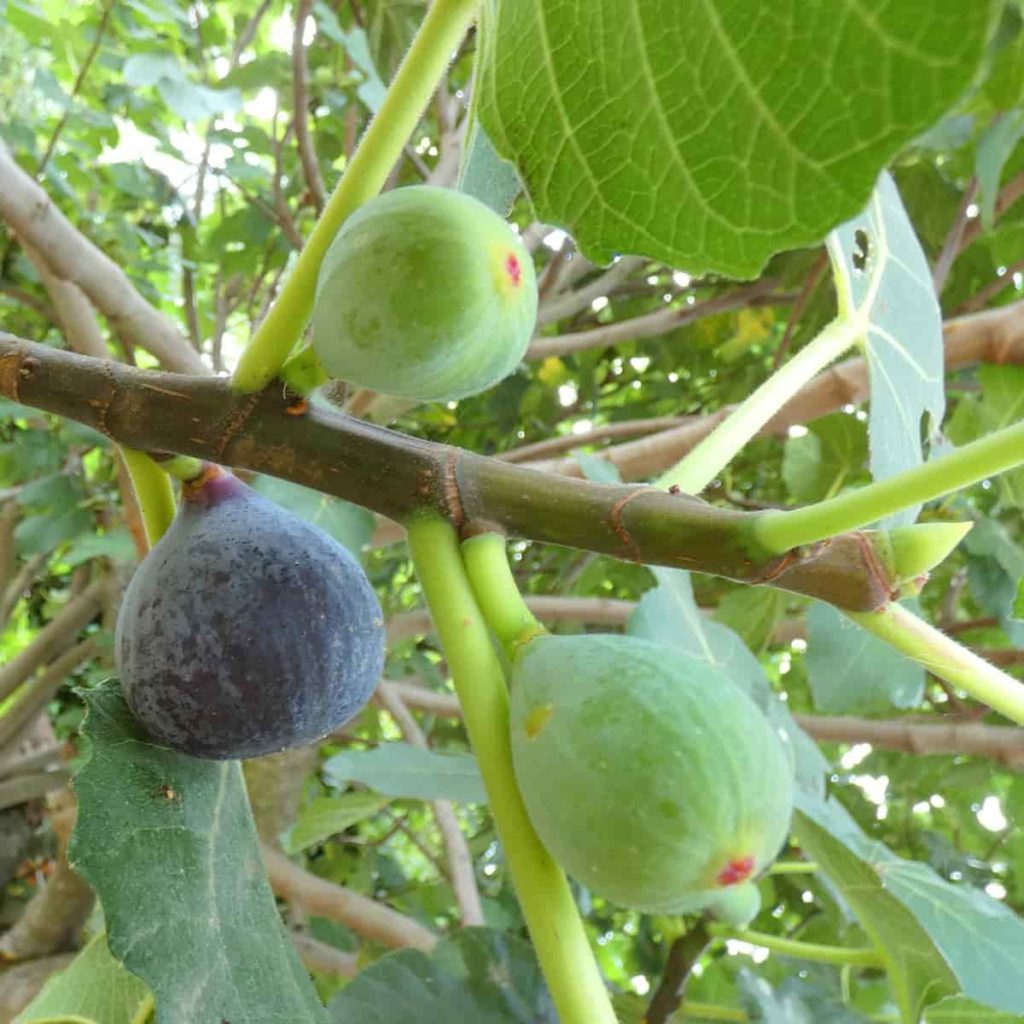
Why is my Fig tree not growing?
Poorly drained soil, inadequate water, pests, low sunlight hours, or more cooling are the main reasons that affect the growth of the Fig tree.
Does Miracle-Gro well for Fig trees?
Miracle-Gro all-purpose plant food is most suitable for Fig trees. This fertilizer comes in the form of water-solving grains.
- Broccoli Seed Germination and Selection
- Asparagus Seed Germination and Variety Selection
- Seasonal Flower Gardening: Best Practices for Spring, Summer, Fall, and Winter
- How to Grow Hibiscus from Flower
- Plantation Ideas for Home Decoration: A Beginners Guide
- Flower Garden Designs and Layouts for Beginners
- Planting and Spacing Techniques in Papaya: A Beginner’s Guide
- Growing Gold: Essential Techniques for Planting Pineapples
- How to Make Kalanchoe Plant Bushy: Home Remedies and Solutions
- 11 Reasons Why Your Gardenia is Not Blooming: Home Remedies and Solutions
- Eco Elegance: The Guide to Designing a Drought-Tolerant Landscape
- Gardening on a Slope: Strategies for Hillside Landscaping
- Nourish and Flourish: Top Organic Mulches for Thriving House Plants
- Everything You Want to Know about Indian Mogra Flower: Discover Uses and Growing
- Green Thumb Success: Expert Tips for Cultivating Greenhouse Pumpkins All Year Round
- Maximize Growth & Flavor: The Ultimate Guide to Companion Planting in Herb Gardens
- How to Control Rhododendron Problems Naturally: Home Remedies and Organic Ways to Fix Them
- Natural Magic: The Remarkable Benefits of Cinnamon for Plants
- Best Steps to Revive Dying Tulip with Natural and Organic Treatment
- 10 Reasons Why Your Angel Trumpet is Not Blooming: Remedies and Treatment
- How to Fix Periwinkle Leaf and Flower-Related Problems: Natural Remedies and Solutions
- How to Fix Zinnias Leaf and Flower Problems: Discover Natural and Home Remedies
- Organic Steps to Induce Lemon Tree Flowers: A Comprehensive Guide
- Bloom Booster: Crafting the Perfect Homemade Bougainvillea Fertilizer
- Optimizing Growth: A Guide to Applying NPK Fertilizer for Potted Plants
- 10 Best Homemade Fertilizers for Rubber Plant: DIY Recipes and Application Method
- How to Boost Female Pumpkin Flowers: Effective Steps for More Flowers and High Yields
- Transform Your Indoor Garden: Top Benefits of Pink Salt for Houseplants
- 10 Best Homemade Fertilizers for Peacock Plants (Calathea): Easy DIY Guide
- Unlock Blooms: 9 Reasons Why Your Potted Chrysanthemum is Not Blooming
- 8 Reasons Why Your Potted Hibiscus is Not Blooming: Fix it with Simple Solutions
- Unlock Blooms: 9 Key Reasons Your Potted Frangipani Won’t Flower
- 10 Reasons Why Is My Ice Plant Not Blooming: Remedies and Treatment
- 10 Reasons Why My Potted Hydrangea Not Blooming: Treatment and Remedies
- 10 Reasons Why is My Wisteria Not Blooming: Remedies and Treatment
- 10 Reasons Why is My Goldfish Plant Not Blooming: Remedies and Treatment